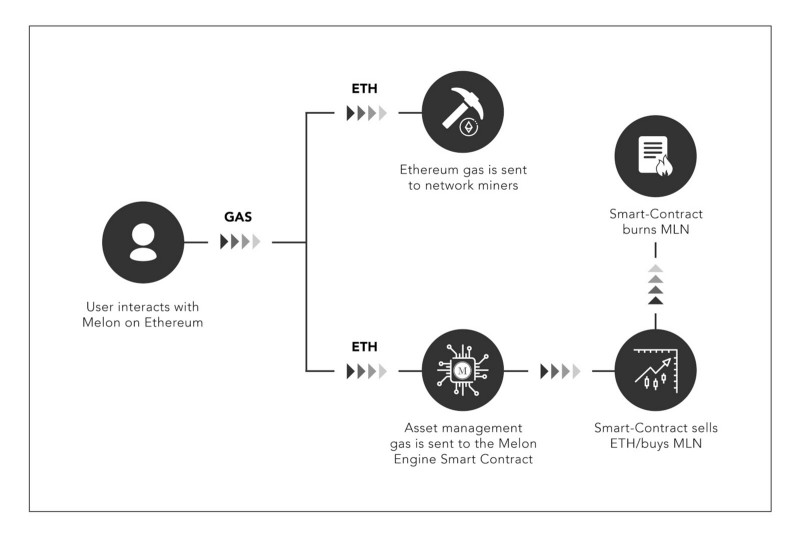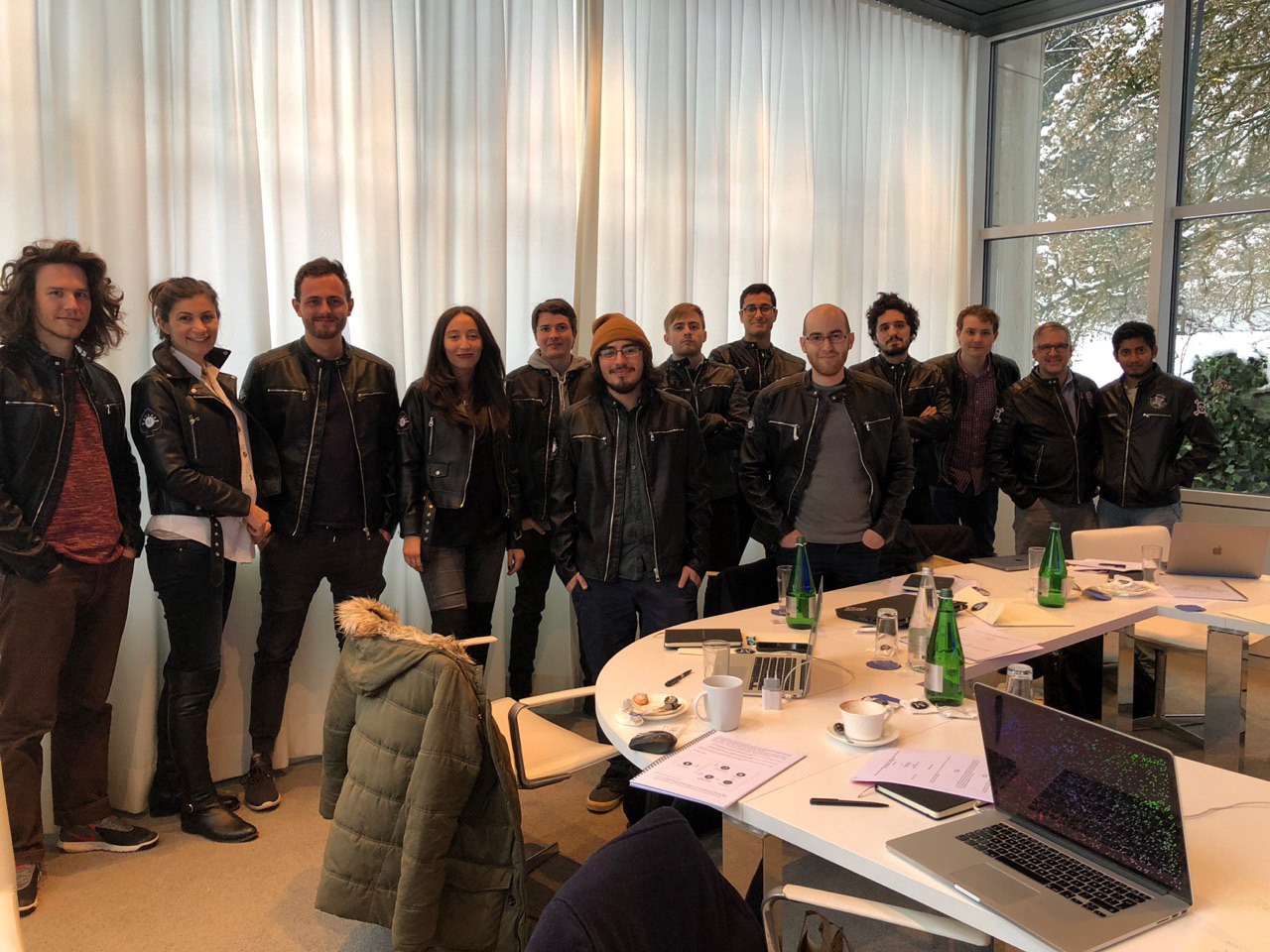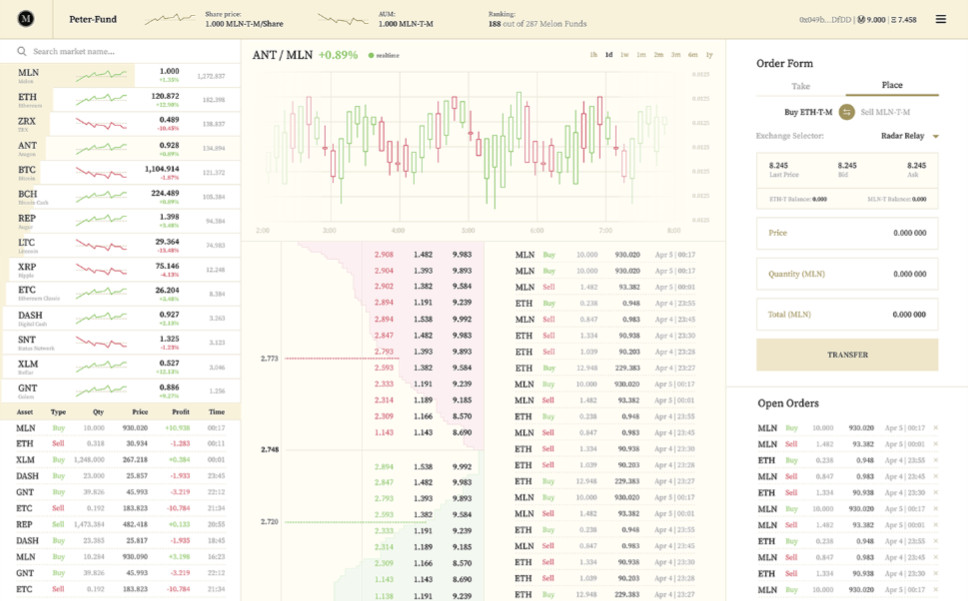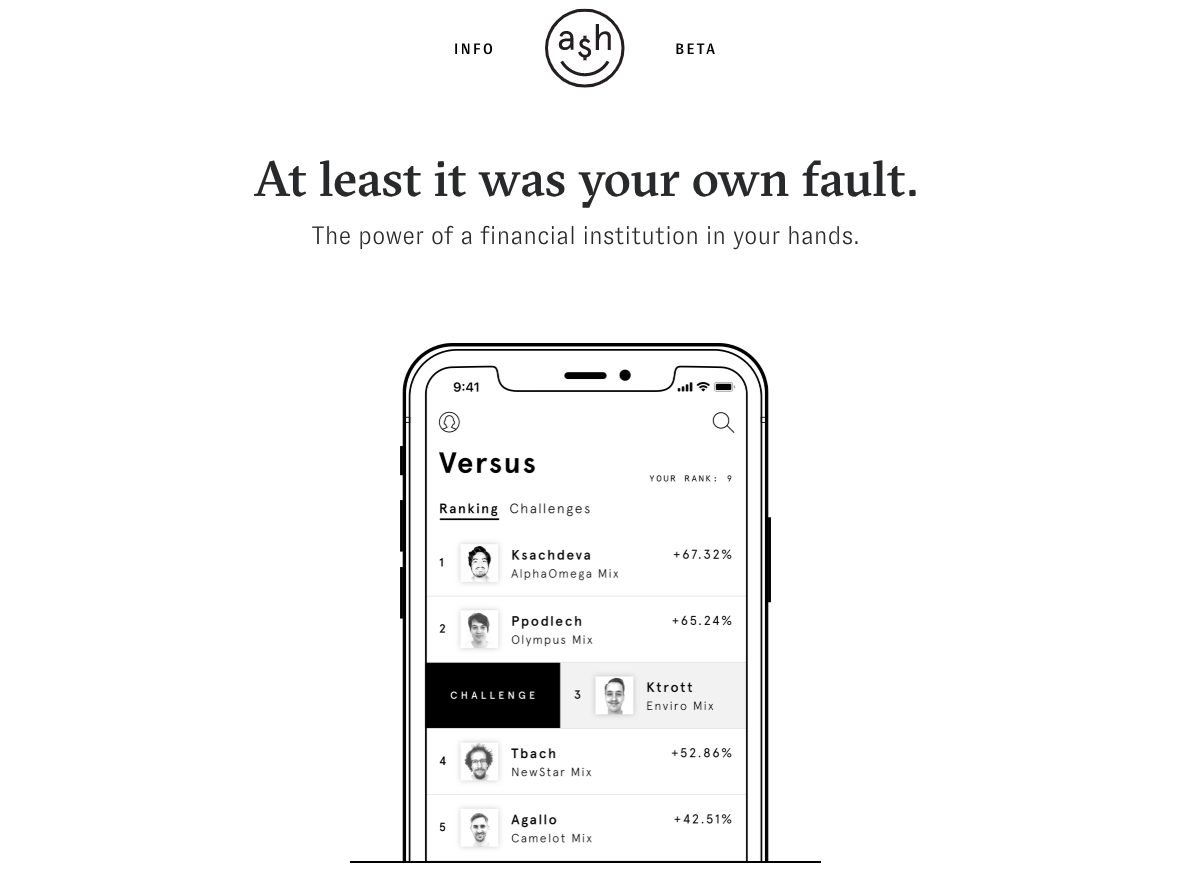Mona El Isa, Co-Founder at Melonport talking about building a new infrastructure for asset management at Melon Protocol.
Hello! What’s your background, and what is the Melon back story?
I (Mona El Isa) started off my career as a trader previously having worked at Goldman Sachs as a market-maker and prop-trader before joining a hedge fund (Jabre Capita)l as a Portfolio Manager in 2011. My next and last stint in finance was a rollercoaster experience of trying to launch my own fund. It didn’t last very long, but it was an incredibly eye opening experience. Despite having single-handedly raised $30 million of assets under management to manage, it was nowhere close to being enough to run due to the phenomenal costs associated with hedge fund management.
For the first time in my life, I was faced with the operational and administrative work that goes into running a fund and I was shocked by how incredibly inefficient, expensive, wasteful and archaic it was in today’s age of technology. I had no time to focus on the job I wanted to do which was — investing! So, I eventually wound down the fund with the intention of taking a year off. I casually started to explore what was happening in the world of fintech.
Then I stumbled across Bitcoin and blockchain platforms and the hugely disruptive and innovative technology that was being built around them and that was it, I was convinced there was a way to leverage this technology to build a new infrastructure for asset management which would lead to lower barriers of entry and eventually better experiences for small to medium-sized managers trying to make it on their own.
We founded Melonport AG in Switzerland, the private company behind the Melon protocol which we released to the main-net in Q1 2019 (two years later). At that point, we handed all control over to the Melon Council which is the decentralized governance structure we devised.
What is Melon? Can you describe it in more detail?
Melon is an open-source protocol for decentralized and on-chain asset management. It is a blockchain software that seeks to enable participants to set up, manage and invest in Technology Regulated and Operated Funds (TROF’s) in a way that reduces barriers to entry, whilst minimizing the requirements for trust. The Melon protocol is a set of rules implementing the behavior of an investment fund as a system of smart contracts. These rules are meant to protect the investor and fund manager from malevolent behavior towards each other, even though both parties may in theory remain unknown to one another.
Melon is a decentralized protocol to set up and manage on-chain funds in digital assets. By automating the back and middle office processes of fund management through the use of smart contracts, Melon enables fund managers to create their own tokenized funds by simply choosing the parameters (fee structure, trading exchanges, asset universe, risk management, etc.) of the fund, which is then in turn deployed on the blockchain.

Managers can trade directly through the Melon trading terminal on the integrated exchanges (only DEXs due to their non-custodial nature). The contracts are responsible for all the internal accounting, which includes the calculation of NAV, shareholder accounting, fee calculations amongst others.
The main benefits - compared to traditional fund structures - are fully automated fund administration, very low barriers to entry due to massively reduced costs and operational workload, transparent and auditable track record and automated reporting/factsheets/financial audits. Investors are provided with access to crypto fund managers through the Melon front-end. As the rules of managing a fund (as specified in the prospectus) are enforced by the smart contracts, investors are assured that the fund manager will only behave as pre-specified in the set up of the fund.
Why did you hand the Melon protocol over to the Melon Council? What role do they play?
Melonport always intended to build a decentralized protocol and this included handing over the future governance of the protocol to a governance system not controlled by Melonport.
After much research, we settled on a multi-sakeholder governance model where a number of organisations and individuals would bebe given the task of ensuring the future maintenance around the protocol. This group were initially selected by Melonport but from now on will grow by consensus. We established that the future maintenance of the protocol would mainly involve three tasks;
-
Resource allocation: Each year, an amount of 300,600 MLN is inflated and set aside for developers and maintainers (or burnt). About 80% of these tokens are available for any developers who want to fulfil MIP’s or develop value-added features on Melon. The process is by application to the Melon Council.
-
Protocol upgrades: reviewing code before version upgrades. Whilst Melon Council never forces users into a particular version (upgrades are “opt-in”), they do push upgrades through when they think it is beneficial or necessary.
-
Adjusting of network parameters: As you will see below, the protocol is subject to “asset management gas”. This is collected in ETH and converted into MLN in a way which is abstracted from the user. Price volatility of ETH/MLN or MLN/USD could influence the user costs in a way where the protocol becomes unaffordable which is an undesired effect. The Melon Council therefore is required to keep a close eye on the economics of this and take action if and when necessary.
All decisions of the Melon Council are taken by majority or supermajority votes depending on the type of decision. The starting Melon Council consisted of Will Harborne (Director of Operations at Ethfinex), Nick Munoz-McDonald (Former Head of Audit at Solidified), KR1 (represented by Janos Berghorn), Matthew Di Ferrante (Founder ZK Labs), Woorton (represented by Zahreddine Touag), Martin Lundfall (Formal Verification Researcher at Dapphub/MakerDAO), Fabian Gompf (VP Technology Partnerships at Parity) and the former Melonport team / Madeeba Ltd (represented by Jenna Zenk).

The initial team were all selected for a range of unique reasons described by Melonport’s CTO Jenna Zenk at M1. If you’d like to read more about Melon’s governance, you can find out more here.
What went into building the Melon Protocol?
The Melon protocol took two years to build from start to finish. It certainly wasn’t a smooth ride most of the time and it took huge commitments and personal sacrifice by the team that saw it through to the main-net launch.
Our vision for Melon is that it will serve as the infrastructure for on-chain asset management. Having said that, in order for an infrastructure to be valuable, it has to be able to take users to destinations they want to go to. What would be the point of building a highway that goes from one deserted area to another? Yes, the highway permits faster travel than a dusty old mud track, but it is still not solving any problem for most travellers.
So when building Melon, we tried to think about ways that we could integrate other useful DeFi projects. The Melon infrastructure brings the TROF layer of finance to the table making it safer and easier for managers and investors to interact with one another. However, in order to get managers to use our infrastructure - we need to make sure that there is an attractive asset universe available with sufficient liquidity available for them to trade.
The modular nature of our software allows DEX’s to be integrated into the Melon Protocol through smart contracts that we refer to as “exchange adapters”. Since there is no common “standard” for DEX’s, many of them are designed differently. The adapters that we needed to build varied according to the various properties the DEX has. As a result of the adapters, we managed to integrate 0x relayers, Oasis Dex, Kyber Network and Ethfinex at a smart-contract level.
Furthermore, in order to add more value to the user, we aggregated the order books of these exchanges (no easy task!) so that managers were always able to achieve and see best price execution for the fund and ultimately the investors. You can find out more on exchange adapters from Gautham Nekkanti’s talk at #M1 in Zug.
Another feature we added was the ability to whitelist the public addresses of investors so that KYC/AML on the participants in a fund could be performed where it is required by regulations.
Security was also a huge concern for us. After all, if your goal is to be the infrastructure layer for on-chain asset management, this could one day be handing billions of dollars worth of crypto. In 2017, one of the first formal verification tools (Oyente) led by Loi Luu out of NUS (Singapore) ran out of funding and Melon pledged a grant to them to continue the great work they were doing.
Our team worked closely with the team and integrated the use of Oyente into our every day work. The Melon protocol has been audited by several different parties over the course of the two-year period including: Martin Swende & Nick Johnson, Least Authority, Deja Vu Security and Solidified (Nick Munoz McDonald).The Melonport team also appointed Matthew Di Ferrante from ZKLabs in the summer 2018 to conduct an ongoing audit and security review until the February 2019 release.
Throughout 2018, Melon launched on the Ethereum main-net for user testing phases several times with limited functionality and in a controlled environment to test the stability of the platform. During this time only fund managers could invest in their own fund, and the amount of investment was capped. Whilst the functionality was limited, it provided a good practice run for us ahead of the main-net launch. These main-net competition unfortunately took a lot more time and energy from us than we had anticipated.

These are just some considerations we made to carefully enhance the user attractiveness and eventually value of the protocol.
For those who are interested in understanding the Melon code base better or contributing code, our github repo can be found here and there are also a good series of talks around the Melon technology stack available here from M1 - the second on-chain asset management conference we hosted in October 2018.
What it the MLN token model?
We genuinely believe the functionality of the MLN token is unique at a protocol level. It operates as “asset management gas” (amg) to set up/manage your Melon fund (as a manager), or invest in a Melon fund (as an investor). Managers also pay “amg” when claiming performance and management fees from the fund. If you call any function on Ethereum, you typically pay gas to the miners. When you call functions on Melon, you additionally have to pay the asset management gas (in ETH) too. The Melon engine, a separate contract, will then collect the asset management gas and use the Ether collected to purchase MLN tokens on the open market and burn them. In effect, this decreases the total supply of the token as well as the velocity by removing them from circulation.
As usage of the protocol increases, more and more asset management gas is consumed and more MLNs are bought from the open market and burned which increases the purchasing power of MLN vs other tokens. This is a framework designed to align the growth of the network with the value of the usage token. Simultaneously, Melon opened up its token to the community by handing over the discretion to other projects to be able to request funding in MLN tokens themselves, if they are building useful applications on top of the protocol (under strict Due Diligence of the technical council). This reduces the need for more asset management tokens in the ecosystem and further aligns network effects on Melon.
The goal is for the protocol to remain cheap enough that users still want to use it whilst costly enough to make it worthwhile for future maintainers and developers to want to earn in the MLN token. You can read more about this in our Melonomics series part I & part II.
What’s your position on the regulatory landscape today?
In 2017, we realised that the existing regulatory landscape for Defi protocols (especially collective investment schemes) was designed with a different type of asset class in mind. Many of the rules imposed were there because of technology limitations with paper-based assets. With tokenization of assets, an entirely new digital asset class has emerged and entirely new operational, administrative, accounting and regulatory possibilities have opened up which no longer require financial intermediaries. However, many of the financial intermediaries which exist in finance today are actually legal requirements.
We realised that the Defi technological protocols would never realise their potential if we didn’t start raising awareness about their benefits, in particular how they could more efficiently serve both regulators and end-savers/ investors which regulations are typically first and foremost designed to protect.
The conclusion of this realisation was the setting up of MAMA, the Multichain Asset Managers Association which serves the purpose of educating the world on TROFs at a federal and regulatory level and demonstrating what is possible through pilot experiments with new and emerging DeFi models.
To date, we have had some small victories as an association but we see this as a marathon not a sprint. The association is currently home to more than 60 members, many of which are well known Defi projects and our doors are always open to new members working in the space who share our hopes and ambitions.
What are your goals for the future?
Shorter term, we want to continue building on and improving the Melon protocol. Integrating other Defi protocols and formally specifying or working on a longer term audit of the protocol are some examples of how we could do that. Currently, ASH finance is building a completely different type of application on the Melon protocol (a gamified approach for managers to challenge one another) . This is great to see - and we are excited to see how other developers will build on the Melon stack in the future.

Our goals longer term are to influence what we can, help to push through friendly regulation with the help of MAMA (it’s a question we get a lot!). We’d also like to improve the front-end performance and features such that Melon becomes a one-stop shop for decentralized asset management. Fund managers can come to one place and find all they need there.
Over the longer term, I’d measure the success of Melon by the AUM managed on the network and how many funds are created. On a personal level, what would make me happiest is to see less well known, small to medium sized managers who would never have had the opportunities to prove themselves previously - gain traction and success due to the transparency, low barriers to entry and ease of use of the Melon protocol.
What are your future thoughts for the DeFi market?
The Defi market is coming together fast. Everyday there is some exciting news - I am adamant that it will continue to grow with a strong force. There are still problems to solve (ease of use, scalability, privacy and so on) and we will probably face some ups and downs as an industry.
However, in the meantime the space is focusing on what it can control and should continue to do that. Integrations are happening left, right and centre making this more of an ecosystem. In other words, we are not dependent on any one project’s success in Defi but rather there is an entirely new financial ecosystem which is strongly interconnected.
